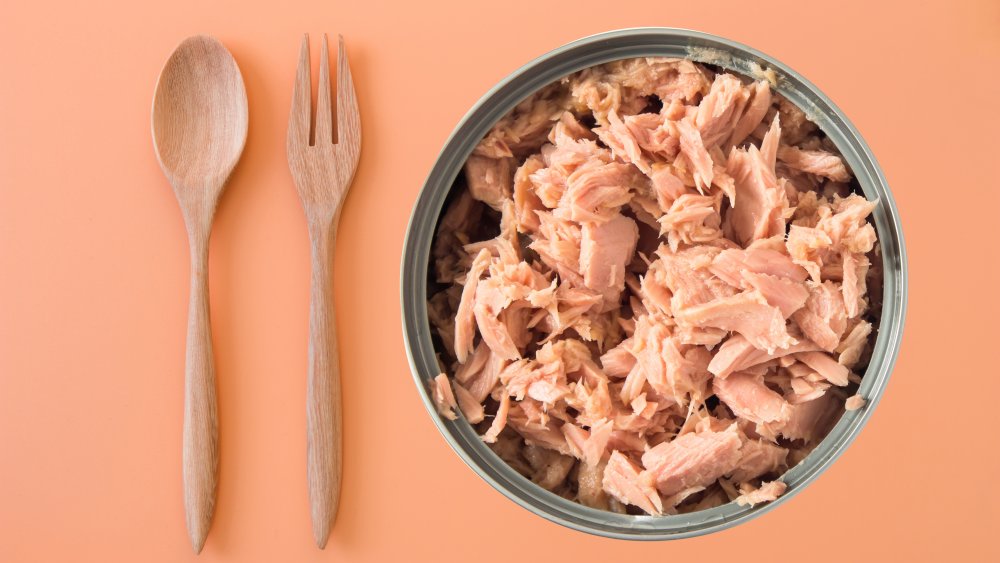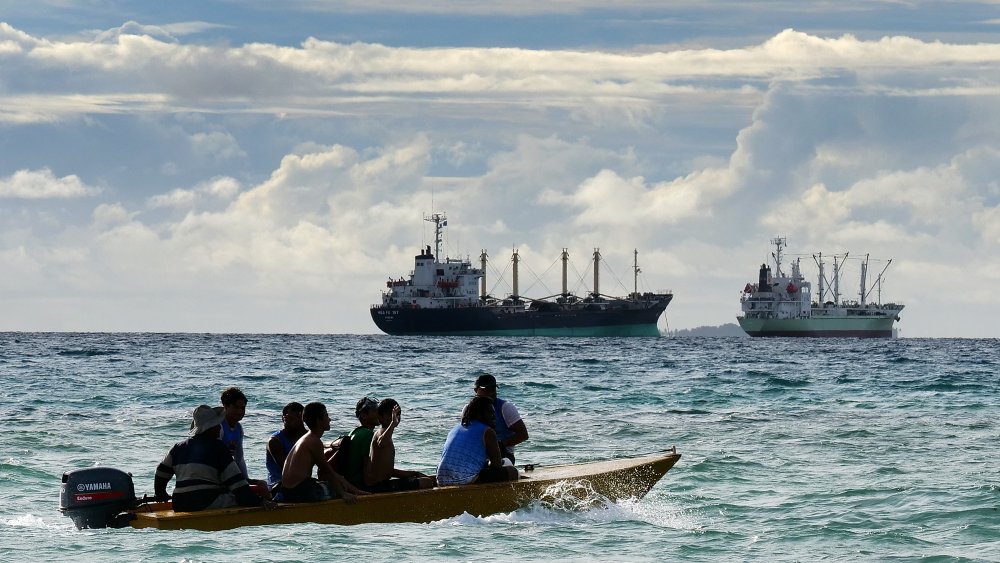There's Going To Be A Lot Less Canned Tuna. Here's Why
For as little as $1 for a 5-ounce can, tuna is one of the cheapest proteins on the market today, and the combined effect of an economic slowdown and shelter-in-place orders have given the pantry staple such a boost that sales of tuna products are much higher now than they were a year earlier (via Wall Street Journal). Bumble Bee Foods says sales of both canned and tuna-in-a-pouch skyrocketed by 100 percent between mid-March to mid-April, and Costco had to put a limit on the number of cans that a customer could buy. Tuna demand is so strong it beat the losing streak experienced by other seafoods like lobster, whose prices dropped after restaurants began closing due to the coronavirus.
Tuna demand didn't just go up in the U.S., it spiked across the pond in Europe too. This was the case in countries like Italy, Spain, Germany, and France, which saw lockdowns triggered by the coronavirus pandemic. According to the UN's Food and Agriculture Organization (FAO), canned tuna sales in Italy alone grew by as much as 45 percent between February and March when most of the country was at home and in isolation.
Canned tuna might be in short supply soon
Increased demand has done wonders for wholesale tuna prices, which have risen by as much as 41 percent from a year earlier. As a consumer, you might not have noticed any price hikes, because the Wall Street Journal says producers were able to hold prices steady. Tuna packers, like those in Southeast Asia, also had enough raw tuna left over from 2019.
But those supplies are running out, and now the FAO admits that there will be less tuna to go around because fishermen are being constrained by efforts to combat the spread of COVID-19. The FAO is also predicting a spike in tuna demand triggered by a gloomy global economic outlook.
Tuna fishermen have been struggling as a result of COVID-19 since March
But we can't say we weren't warned. Back in March, Bill Gibbons-Fly of the American Tunaboat Association said that tuna fishermen were struggling to stay in business (via the Western Pacific Regional Fishery Management Council). "The increasing travel constraints throughout the Pacific are complicating efforts to get crew, repair parts, technicians and supplies to boats in a timely fashion," Gibbons-Fly said. "And some ports where the boats would offload or transship fish are simply closed to them. This combination of factors not only puts the immediate operations of the fleet at risk, but also raises questions about the ability of this industry, along with many others, to overcome the broader economic and social disruption caused by the current pandemic."
Adding to this, the FAO says a seasonal fishing closure in Gibbons-Fly's area — which takes place between July to September — has just kicked off. This means efforts to catch raw tuna from the Western and Central Pacific Ocean won't restart until the fall. So if you have any cans of tuna in your pantry, you may want to savor them, because it may take a while before supplies return to normal.


